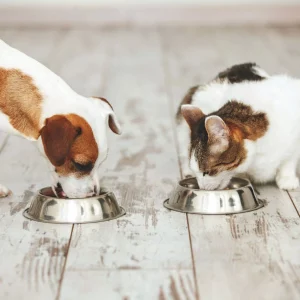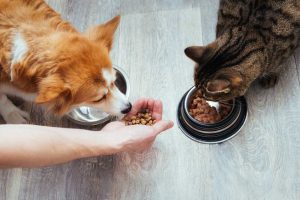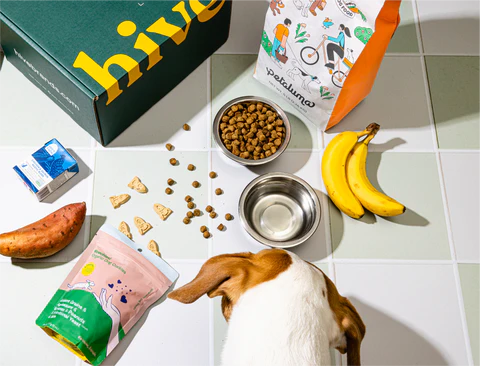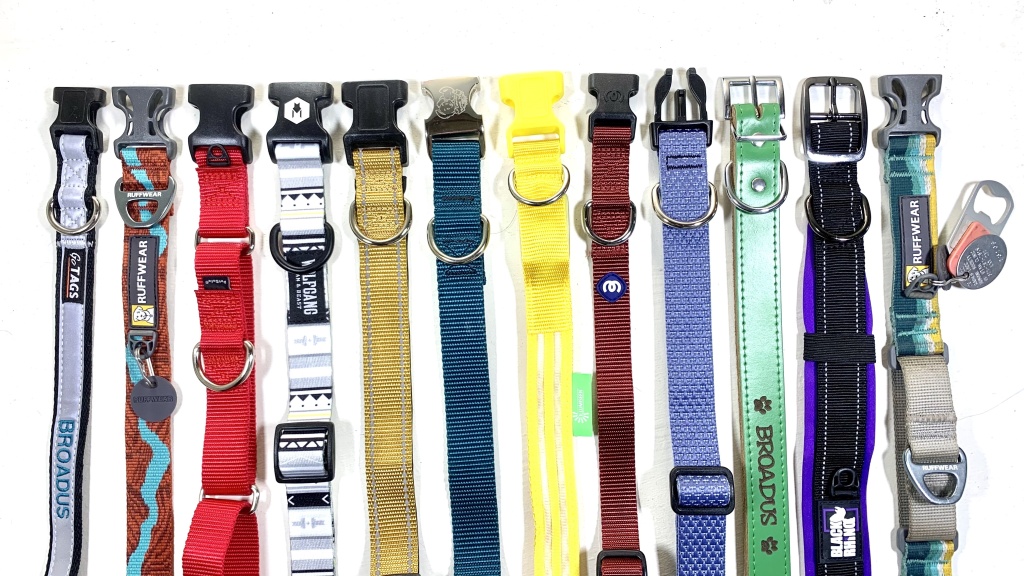As a pet parent, choosing the best products for your furry friend is crucial for their overall well-being and longevity. It’s important to consider the potential risks that harmful chemicals may pose to your pet’s health. By selecting high-quality pet products, you can ensure that your pet is receiving optimal nutrition and care while reducing their risk of exposure to harmful substances.
When choosing pet products, several key factors should guide your purchasing decisions. Nutritional adequacy, organic and natural ingredients, and product transparency are all crucial considerations. Choosing products with natural and organic ingredients can help eliminate the presence of toxic chemicals, preserving your pet’s long-term health.
Preventive care is also an essential component of optimizing your pet’s health. Regular veterinary checkups and early detection of health issues can help identify any potential problems before they progress, allowing you to take proactive measures to protect your pet’s health.
By choosing the best pet products, you can help ensure that your furry friend stays healthy and happy throughout their entire life. Implementing healthy feeding practices, including following feeding guidelines and selecting high-quality, balanced diets, can help maintain your pet’s cholesterol levels and energy levels at healthy levels. Additionally, providing natural sources of nutrition and carefully monitoring your pet’s body condition score can help prevent health conditions and improve their overall quality of life for years to come.
Pet Food
Pet food is an essential component of every pet parent’s routine. It is critical to choose the best pet food, as it directly influences the overall health and well-being of your furry friend. Several factors, including the type of food, ingredients, nutritional adequacy, and feeding practices, must be taken into account when selecting pet food. In this article, we will discuss the benefits of choosing the best pet food and how it can promote preventative care, and balanced nutrition, and support your pet’s overall health and vitality.

Wet Foods
Wet food is a popular choice of food for many pet parents due to its palatability and moisture content. It comes in different forms, from canned and pouches to trays and tubs. Each type of wet pet food has its pros and cons that pet parents should consider when choosing the best option for their furry friends.
Canned wet food is readily available and comes in a range of flavors, making it easy to find one that your pet likes. It is also highly palatable and contains a high amount of moisture, which can help keep your pet hydrated and prevent certain health conditions such as urinary tract disease. However, canned wet food may be costlier than other types of pet food and may not be as convenient to store compared to dry food.
Pouched wet food, on the other hand, is a more affordable option. It is also easy to store, and its small serving sizes make it convenient for pet parents who are always on the go. However, it may not be as highly palatable as canned wet food, and its plastic packaging may not be eco-friendly.
Trays and tubs are similar to canned wet food but in smaller sizes. This makes them convenient for serving and storing, especially for smaller breeds. However, they may not come in as many flavors compared to canned wet food and may not be as cost-effective.
When choosing the best-wet food for your pet, factors such as cost, convenience, and palatability should be taken into consideration. It is important to choose a high-quality wet food that provides excellent nutritional value and meets your pet’s nutritional needs.
Some of the best-wet dog food brands include Hill’s Science Diet, Royal Canin, Blue Buffalo, and Purina Pro Plan. These brands offer a variety of wet food options that are made using high-quality, wholesome ingredients and are rich in nutrients.
Wet food can also be used in combination with dry food to complement your pet’s diet. Dry food provides a good source of nutrients and can be left out during the day for your pet to snack on. Wet food can then be given as a special treat or meal supplement that adds moisture and variety to your pet’s diet.
Dry Foods
Dry pet food, also known as kibble, has become a popular option for pet parents due to its convenience and affordability. Compared to wet food, dry food can be easily stored and has a longer shelf life. This makes it a preferable option for pet parents who don’t have the time or resources to constantly purchase and serve wet food.
Another advantage of dry food is the dental benefits it provides to pets. The dry texture of kibble can help scrape off plaque and tartar from teeth, promoting good oral hygiene and preventing dental problems in pets. Additionally, dry food is said to be less messy than wet food, as it doesn’t leave behind a strong smell or leave stains on carpets and floors.
The invention of dry pet food is largely credited to the extrusion process. This process involves cooking ingredients at high temperatures and pressure, resulting in a dry, shelf-stable product that is easy to store and transport. The invention of dry pet food revolutionized the commercial pet food industry by allowing manufacturers to produce large quantities of food at a fraction of the cost of wet food. This led to an increase in the availability and accessibility of pet food for pet parents.
Despite its advantages, there are also some disadvantages to feeding pets dry food. One common issue is palatability, as some pets may not enjoy the taste or texture of dry food. Additionally, some pet parents struggle with providing the proper serving size of the kibble. Overfeeding or underfeeding can lead to health problems such as obesity or malnutrition.
Another issue surrounding dry food is its effect on gastric emptying. Dry food is typically harder to digest than wet food and can take longer to leave the stomach. This can cause discomfort or even digestive issues in pets, especially for those with sensitive stomachs or prone to gastrointestinal problems.
Human Food vs. Pet Food
When it comes to providing adequate nutrition for our pets, we must keep in mind that what is suitable for humans may not meet their nutritional requirements. Pet food has been carefully formulated to meet a pet’s specific nutritional needs, while human food lacks several essential nutrients and minerals that a pet’s body requires.
For instance, dogs require a higher proportion of protein in their diet to support their muscle development and overall health. On the other hand, cats require a source of dietary protein, fat, and other essential amino acids to keep them healthy. Feeding them human food, which is not specifically formulated to meet their nutritional adequacy, can result in malnutrition and other health problems.
Moreover, pets’ nutritional requirements change as they age, and different life stages demand different nutritional needs. Puppies and kittens require diets that are high in calories, protein, and fat to support their growth and development. In contrast, older pets need diets that are low in calories, fat, and sodium to maintain a healthy weight and prevent chronic health conditions.
Nutritional Adequacy and Life Stages
Nutritional adequacy is crucial for pets to maintain good health and prevent the onset of various health conditions. Just like humans, pets require a balanced diet that meets their unique nutritional needs depending on their life stage. As pets grow and develop, they require different levels of essential nutrients to support healthy growth, and development, and to maintain good health.
For example, during the puppy stage, dogs require a diet that is high in calories, protein, and fat to support their growing muscles, bones, and organs. Without a diet that meets their nutritional requirements, puppies could suffer from developmental issues, weak muscles, and poor overall health. On the other hand, adult dogs require a diet that is balanced and meets their nutritional needs to maintain good health, prevent chronic diseases, and stay active.
Large breed dogs require a diet that is low in fat and calories, which helps them maintain healthy body weight and prevent conditions such as hip dysplasia. Small breed dogs, on the other hand, require a diet that is high in calories and protein to fuel their high energy levels and support their small frames.
There are essential nutrients that must be present in a dog’s diet, including protein, carbohydrates, fats, vitamins, and minerals. Protein is essential for building and repairing muscles, while carbohydrates provide the energy needed for daily activities. Fats play a crucial role in supporting healthy cell function, while vitamins and minerals contribute to healthy metabolism, strong bones, and immunity against diseases.
To ensure that pets receive the right nutrients at every life stage, pet parents should consider feeding their pets “all life stages” food. This type of food meets the nutritional requirements of both puppies and adult dogs, and it can save parents time and money. It is important to note that feeding guidelines, such as daily meals and the right balance of wet and dry kibble, vary depending on the pet’s age, breed, and activity level.
Organic, Natural, and Healthy Foods
Pet parents want the best for their furry friends, and choosing the right food is essential for their health and well-being. Organic, natural, and healthy pet food options are becoming increasingly popular among pet owners. But what exactly do these terms mean?
Organic pet food is made with ingredients that are grown without the use of synthetic fertilizers, pesticides, or other harsh chemicals. The US Department of Agriculture (USDA) regulates organic products, and pet food brands must meet strict criteria to earn the organic label certification. Organic pet food brands available in the market include Newman’s Own, Castor & Pollux, and Organix.
On the other hand, natural pet food is made with ingredients that are minimally processed and contain no artificial preservatives, colors, or flavors. However, natural pet food ingredients may or may not be organic. Natural pet food brands available in the market include Blue Buffalo, Merrick, and Solid Gold.
Lastly, healthy pet food refers to a diet that meets your pet’s nutritional needs while supporting their health and well-being. Some healthy pet food options include raw diets, grain-free diets, and limited ingredient diets. Many pet food brands have started to include superfoods like berries, kale, and spinach in their products to provide additional nutritional benefits.
Choosing the best organic or natural pet food for your furry friend can help improve their overall health and well-being. These products are free from harmful chemicals and additives that can lead to health issues like obesity, food allergies, and digestive problems.
When choosing organic or natural pet food, it’s essential to check for certifications from reputable organizations like the USDA. Reading and understanding the ingredients used in pet food products can also be helpful. Avoid products that contain fillers or by-products that provide little to no nutritional value.
Purchasing Decisions and Reading Labels
For pet owners, making informed purchasing decisions when it comes to pet food is crucial to ensuring their furry friend’s health and well-being. One of the best ways to do this is by reading pet food labels and understanding what information to look for.
Firstly, pet owners should look for the nutritional adequacy statement on the label. This statement will indicate whether the food meets the minimum requirements for essential nutrients established by the Association of American Feed Control Officials (AAFCO). It’s important to choose a food that is appropriate for your pet’s life stage, such as puppy or senior, as their nutritional needs differ at different stages of life.
Next, pet owners should check the ingredients list. Ideally, the first few ingredients should be a high-quality protein source like chicken or beef, followed by whole grains or vegetables. Avoid products that list vague ingredients like “meat meal” or “by-products,” as they provide little nutritional value.
Pet owners should also consider the type of pet food and food bowl they choose. Organic pet food is made with ingredients grown without the use of synthetic fertilizers, while natural pet food is minimally processed and has no artificial colors, flavors, or preservatives. Additionally, some pet owners opt for specialized diets like raw or grain-free. When it comes to food bowls, ceramic or stainless steel options are better than plastic as they are less likely to harbor bacteria and are easier to clean.
Unfortunately, not all commercial dog food brands are created equal. Some may contain fillers, preservatives, and other harmful ingredients that can have negative impacts on your pet’s health. Pet owners should look out for brands that use vague or unfamiliar ingredients, or those that have been recalled in the past. Additionally, monitoring your pet’s energy levels, weight, and overall health while on a particular brand of food can help you make informed decisions about their diet.
Commercial Dog Food Brands
Commercial dog food brands are a convenient option for pet owners who want to ensure their furry friends are getting a balanced and complete diet. However, with so many options available in the market, choosing the right one can be overwhelming. In this article, we’ll introduce some of the most popular and trusted commercial dog food brands and discuss the key factors to consider when selecting one for your pet.
Most commercial dog food brands offer a range of products that cater to different life stages, breed sizes, and health issues. Some of the well-known brands in the market include Blue Buffalo, Purina, Hill’s Science Diet, Royal Canin, and IAMS. Each of these brands is tailored to address specific nutritional requirements.
Blue Buffalo is a well-known brand that offers numerous options for different life stages, from puppy to senior. Their products contain high-quality proteins and whole grains, with no artificial preservatives, colors, or flavors. Blue Buffalo also offers grain-free options for dogs with grain allergies or sensitivities.
Purina offers a variety of products that cater to different life stages, breed sizes, and health concerns. Their flagship brands, Purina ONE, and Purina Pro Plan, feature high-quality proteins, whole grains, and essential nutrients that promote healthy skin, coat, and digestion.
Hill’s Science Diet is a brand that produces prescription diets for dogs with specific health issues. They offer a range of formulas for dogs with allergies, digestive issues, joint problems, and weight management. Hill’s Science Diet also has a line of products that cater to dogs at different life stages, from puppy to senior.
Royal Canin is another brand that specializes in breed-specific diets. They offer formulas that cater to the unique nutritional needs of various breeds, from Chihuahuas to Great Danes. Their products are also tailored to specific life stages and health issues.
IAMS produces a range of dry and wet dog food formulas that cater to different life stages and breed sizes. Their products contain high-quality proteins and whole grains that provide balanced nutrition and support healthy digestion.
When selecting a commercial dog food brand, pet owners should consider several key factors, such as nutritional value, specific health issues, and life stages. It’s important to choose a food that meets the nutritional requirements established by the AAFCO and is appropriate for your pet’s life stage. In addition, if your dog has specific health issues, it’s best to consult with your veterinarian and choose a brand that specifically addresses those concerns.
Many commercial dog food brands use preservatives to ensure the food remains fresh for longer. Some of the most common preservatives include BHA (butylated hydroxyanisole), BHT (butylated hydroxytoluene), and Ethoxyquin. However, research has shown that these preservatives may have harmful effects on dogs, including causing cancer. Pet owners should look for brands that use natural preservatives like tocopherols or rosemary extract.
Commercial dog food brands may also contain supplements like vitamins, minerals, and probiotics, which are beneficial for your pet’s health. However, it’s important to ensure that these supplements are safe for your dog and that they’re included in the appropriate amounts.
In terms of the best and worst commercial dog food brands, the quality, price, and overall value vary based on specific product lines. However, pet owners should be cautious of brands that have been recalled in the past, and those that use vague or unfamiliar ingredients. It’s always important to read the label carefully and consult with a veterinarian for recommendations on the best commercial dog food brand for your pet’s individual needs.
Pet Bowls and Accessories
Pet bowls and accessories play a crucial role in ensuring that our furry friends receive proper nutrition and stay hydrated throughout the day. Choosing the right pet bowl and accessories can also contribute to a healthier and happier pet, as it can prevent some health conditions and physical discomfort. In this article, we’ll explore the benefits of using different types of pet bowls and accessories and what to consider when choosing the best options for your pet.

Types of Bowls Available
Giving your pet the right type of bowl to eat from can make a huge difference in their mealtime experience. With so many types of bowls available on the market, it can be daunting to choose the right one. In this article, we will introduce you to the different types of pet bowls, their shapes, materials, functions, benefits, drawbacks, and the best bowl for your pet’s needs.
1. Plastic Bowls:
Plastic bowls are one of the most commonly available types of pet bowls on the market. They come in a variety of sizes and colors and are often the most affordable option. Lightweight and easy to clean, plastic bowls are ideal for traveling or when feeding outdoors. However, plastic bowls scratch easily and can harbor bacteria if not cleaned properly.
2. Ceramic Bowls:
Ceramic bowls are heavier and more durable than plastic bowls. They come in various colors and designs, making them perfect for pet owners who want stylish and functional feeding bowls. They are also dishwasher safe and can withstand high temperatures. However, ceramic bowls can easily break, which can be dangerous for pets, especially if they ingest any shards.
3. Stainless Steel Bowls:
Stainless steel bowls are sturdy and easy to clean. They come in different shapes and sizes and are often non-slip, making them great for messy eaters. Stainless steel bowls are unbreakable and do not scratch easily. They also do not harbor bacteria, making them hygienic and therefore ideal for pets with health conditions that require a sterilized feeding bowl.
4. Automatic Feeders:
Automatic feeders are electronic feeding devices that dispense food at preset times. They come in various sizes and shapes and are perfect for pets that eat multiple meals throughout the day. Automatic feeders also come equipped with water dispensers to ensure that your pets stay hydrated while you are away. They are, however, more expensive than traditional feeding bowls.
5. Interactive Feeding Bowls:
Interactive feeding bowls are designed to make mealtime fun for pets. They come in various shapes and sizes and are perfect for pets that eat too fast or suffer from anxiety. These bowls are designed to promote slow feeding by forcing pets to work harder for their food. They encourage pets to eat slower, which is better for their digestion and overall health.
In choosing the best type of bowl for your pet, it is essential to consider features such as size, capacity, durability, ease of cleaning, and anti-slip features. For example, large dogs would require larger bowls with higher capacities than smaller dogs. Additionally, dogs that tend to move their bowls around during mealtime would benefit from non-slip bowls to avoid messes and spillages.
Veterinary Care and Health Benefits
Taking care of your pet’s health is crucial to their overall well-being and happiness. One of the essential aspects of pet health care is veterinary care. Regular check-ups, vaccinations, and preventative care are all necessary to ensure that your pet remains healthy. Additionally, choosing the best pet products, such as food bowls and food, can also have significant health benefits for your furry friend. In this article, we’ll explore the benefits of veterinary care and choose the best pet products for your pet’s health.
Preventive Care and Early Detection of Health Issues
Choosing the best pet products goes beyond the type of food or shampoos you buy for your furry friend. As a responsible pet parent, you should prioritize preventive care and early detection of health issues to ensure your pet’s well-being. Let’s take a closer look at why this is important:
Preventive care plays a significant role in identifying and addressing any health issues before they get worse. This is where pet insurance that includes preventive care coverage can be beneficial. For instance, regular wellness checkups can help catch potential health issues early, making it easier to treat and manage them. Pet insurance that covers preventive care services such as vaccinations, routine exams, and heartworm prevention can help pet owners save on these services and prioritize preventive care.
Unfortunately, there exists a gap called the “Health Prioritization Gap” that affects pet owners’ decisions when buying healthy food for their pets. Many pet owners prioritize their own food choices over their pets, not recognizing that what makes human food healthy may not necessarily apply to pets. As such, pet owners tend to buy the cheapest brand of pet food without considering the quality or long-term health benefits. It is crucial to prioritize quality when selecting pet food, keeping in mind expert recommendations and seeking advice from a veterinary nutritionist.
As a pet owner, there are several preventive care measures you can take to ensure your pet stays healthy. These include regular wellness checkups with your veterinarian, vaccination against deadly diseases, dental care to prevent gum disease, and flea and tick control. These measures help detect health issues early, potentially saving you money and your pet’s life in the long run.
Pet owners should also engage in active information-seeking behavior when it comes to buying pet food. This means doing thorough research to find the best food options that fit their pet’s nutritional adequacy, life stages, and body condition score. By actively seeking information about pet foods, pet owners can make informed decisions and choose natural products with organic ingredients that provide nutritional value to their pets.
Nutrition for Optimal Health Conditions
Proper nutrition is a critical component in maintaining optimal health conditions for pets. A well-balanced diet that meets the nutritional adequacy standards for their specific life stage and body condition score can help prevent a wide range of health issues. Puppies, in particular, have specific nutritional requirements that differ from adult dogs. They require diets that are higher in protein and fat to support growth and development. Many pet food manufacturers offer puppy formulas designed to meet these specific nutritional needs.
Likewise, different breeds of dogs have unique dietary requirements. Large breed dogs, for example, have a higher risk of developing joint issues, making it crucial to feed them a diet that supports joint health. Small breed dogs have a higher metabolism and require more calories per pound of body weight. Dog owners should be aware of the specific nutritional requirements of their pets and choose a diet that meets those needs.
Pets with special dietary needs also require careful attention to their food choices. Some pets may have food allergies or intolerances, while others may require weight management diets or diets focused on promoting healthy skin or coats. Working with a veterinarian or veterinary nutritionist to develop an appropriate diet plan is crucial for pets with special dietary needs.
When choosing pet food products, pet owners should aim for organic, natural, and healthy options. Organic pet food is made from ingredients that are grown without the use of synthetic pesticides, hormones, or antibiotics. Natural pet food is formulated with natural sources of ingredients, as opposed to synthetic ones. Healthy pet food is a well-balanced, nutritious diet that provides all of the essential nutrients pets require. Feeding pets high-quality pet food products helps to promote their overall health and well-being.
Supplements can also be used to improve pet well-being. Supplements such as joint support supplements, probiotics, and vitamins can help support a pet’s immune system, digestive health, and joint health. It is crucial to consult with a veterinarian before adding supplements to a pet’s diet to ensure it is appropriate for their specific needs.
Overall, providing pets with a well-balanced, nutritious diet that meets their specific nutritional requirements can help maintain optimal health conditions and prevent a wide range of health issues. By prioritizing nutritional adequacy, choosing organic and natural pet food products, and considering supplements when necessary, pet owners can play an active role in promoting the health and well-being of their pets.
Supplements to Improve Well-Being
Supplements are an essential part of maintaining your pet’s overall health and well-being. They can help improve your pet’s immune system, digestive health, joint health, and overall vitality. Supplements can be found in various forms, including vitamins, minerals, and other natural ingredients that provide your pet’s body with the nutrients it needs to maintain good health.
One of the most important supplements for pet health is omega-3 fatty acids. These essential fatty acids are vital for maintaining healthy skin and coat, supporting joint health, and reducing inflammation. Omega-3 fatty acids can be found in fish oil supplements, which are available in most pet supply stores. Just a few drops of fish oil added to your pet’s food can help improve their overall health.
Another essential supplement is glucosamine, which helps support joint health. As pets age, they become more prone to joint issues, making glucosamine an important supplement to consider. Glucosamine supplements are available in tablet or chewable form and can help improve your pet’s mobility and reduce joint pain.
Probiotics are also important for maintaining your pet’s digestive health and immune system. Probiotics help promote the growth of beneficial bacteria in your pet’s gut, which can lead to better digestion and overall health. Probiotic supplements come in various forms, including powders, capsules, and chews.
Digestive enzymes are another essential supplement that can help improve your pet’s digestive health. These enzymes help break down nutrients in food, making the nutrients more accessible and easier for your pet’s body to absorb. Digestive enzyme supplements can help reduce digestive issues such as constipation, diarrhea, and gas.
Antioxidants are natural compounds that help protect your pet’s cells from damage caused by harmful free radicals. Antioxidant supplements are available in various forms, including vitamins such as vitamin C and E, as well as natural ingredients like green tea extract and blueberries.
It is important to note that not all pets require the same supplements. A personalized supplementation is an option that considers your pet’s specific needs when choosing supplements. Consulting with a veterinarian or veterinary nutritionist can help you identify the right supplements to improve your pet’s health and overall well-being.
Conclusion
In conclusion, as pet owners increasingly prioritize the health and nutrition of their beloved furry friends, it is important to be aware of some of the misleading information and marketing strategies surrounding pet food. While there is a growing interest in feeding pets the most nutritious and healthy diets possible, pet owners must be accurately educated about what constitutes a truly nutritious and healthy diet.


